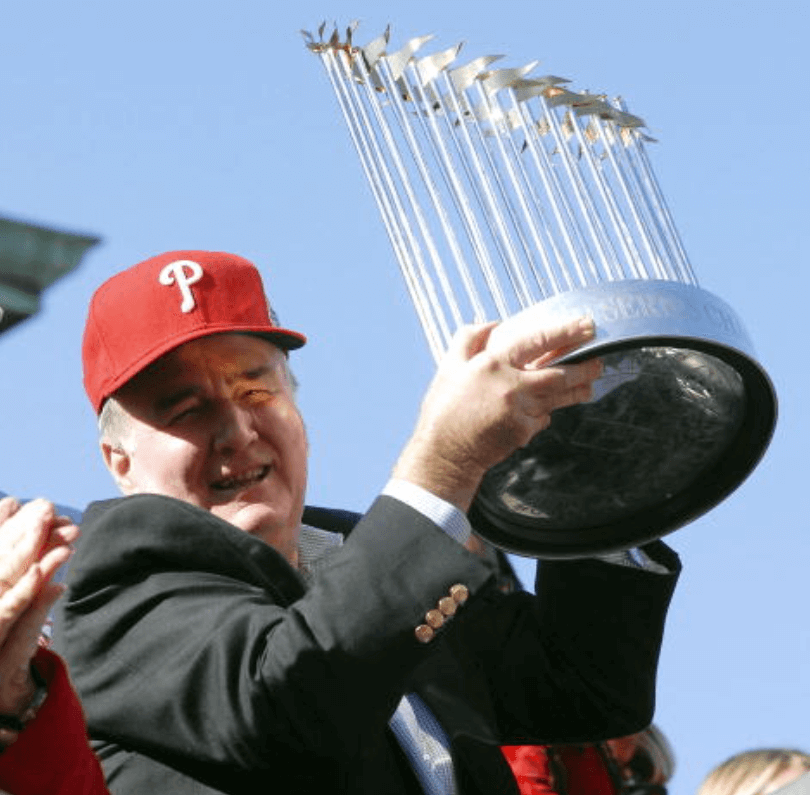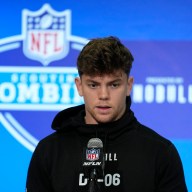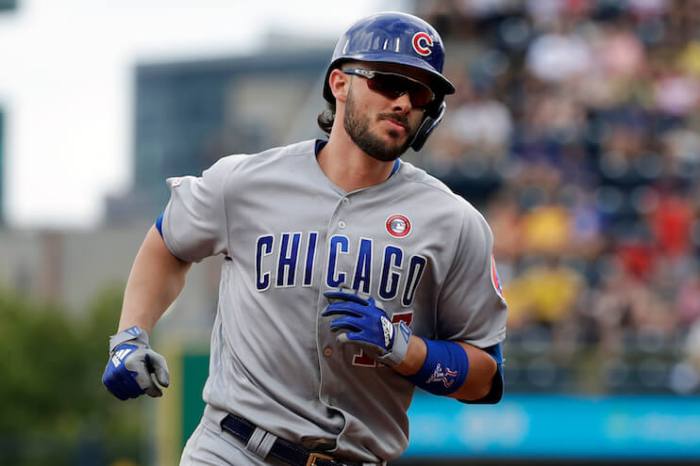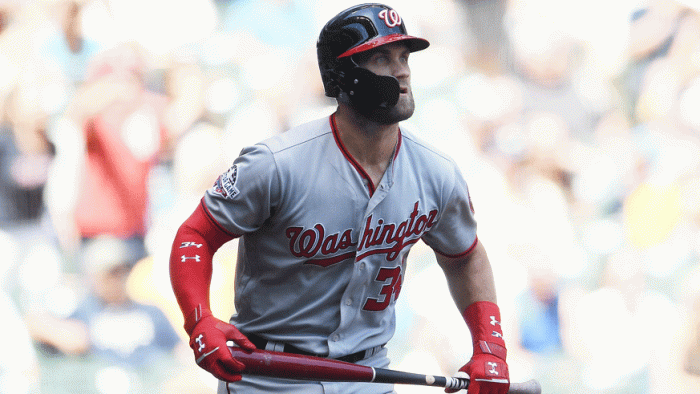With the announcement that Andy MacPhail will replace Pat Gillick as Phillies’ president after this season, it seems like a good time to take a look at the history of the position and how it has evolved with the team over the years. From the team’s inception in 1883 through 1913, seven different men held the position.Then for the next 30 years, there were four presidents.And from 1943 until Pat Gillick replaced David Montgomery in 2014, the club was again stewarded by just four men. For a team for whom success has been so brief and so sparse, this lineage of decision-makers does fit the public perception that the Phillies are too complacent, showing loyalty not just to aging players but to executives that aren’t overseeing results. The longevity doesn’t quite stretch to general managers though. The longest tenured GM in team history, John Quinn, held the position for 13 years, followed by Paul Owens at 12.
The average stay, since the position of GM first appeared in 1944, has been under seven years.Pat Gillick, one of the cities most fondly remembered GMs, had the second shortest tenure with the Phillies: only three years. Here’s a brief review of the Phillies under the four most recent presidents (excluding Gillick) and the men who worked for them.
Bob Carpenter 1943-1972
Carpenter became team president at the age of 28, when his father purchased the team.He assumed GM duties in 1948 following the death of GM and Hall of Fame pitcher Herb Pennock.
His tenure would see the height of the 1950 Whiz Kids, who won the NL pennant on the efforts of Richie Ashburn, Del Ennis, Robin Roberts and league MVP Jim Konstanty, to date the only relief pitcher to win the award. But the team would eventually succumb to the Yankees in the World Series, and fall out of relevance before the events of 1964.The “Fizz Kids” held a six-and-a-half game lead in the pennant race before losing ten games in a row in late September to fall out of first place and the playoffs. Ruly Carpenter 1972-1981
Ruly succeeded his father in 1972.This coincided with the elevation of Paul Owens to GM and would set the table for one of the most successful periods in team history.
The Phillies won four of five division titles from 1976 to 1980, before finally breaking through and defeating the Royals in the 1980 World Series behind MVP Mike Schmidt and Cy Young winner Steve Carlton.The team was shepherded by first year manager Dallas Green. In 1981 however, the Carpenter family sold the Phillies.
Bill Giles 1981-1997
Giles tenure began with the purchase of the Phillies by the current ownership group, which included himself.It also began with the continued success of the 1980 World Champions, who, though they did not win another World Series, reached the 1983 Series before bowing out to the Baltimore Orioles. This was a barren period for the team, and the only winning season between 1986 and 2001 was the fondly remembered 1993 team.The club overcame a last place finish in 1992 to lead their division wire-to-wire in 1993 and reach the World Series before heart break once again against an AL East foe – this time the Toronto Blue Jays, back-to-back World Series champions. David Montgomery 1997-2014
Montgomery’s reign saw, like much of the Phillies’ history, both ends of the spectrum.It is perhaps the franchise’s history in microcosm.
As mentioned before, the poor play of the nineties extended through the beginning of his time.But in 1998 Ed Wade assumed the role of GM, and coupled with the strong drafting of Mike Arbuckle, the Phillies’ fortunes began to change. While the major league Phillies were either enduring losing seasons or, in the early 2000s under Larry Bowa, coming close to the playoffs but never quite reaching them, the generation that would ultimately lead the Phillies to their second World Series title was being drafted and cutting their teeth in the minors. There may have been a lot of “almosts” in those years, but fans could rest assured: Jimmy Rollins, Brett Myers, Cole Hamels, Ryan Howard and Chase Utley were on their way.
It is a stark contrast to the years at the end of Montgomery’s era, when results again turned South, and there were no minor leaguers to look to for future salvation.
Andy MacPhail the first outsider to lead Phillies since team’s inception

Getty Images


















